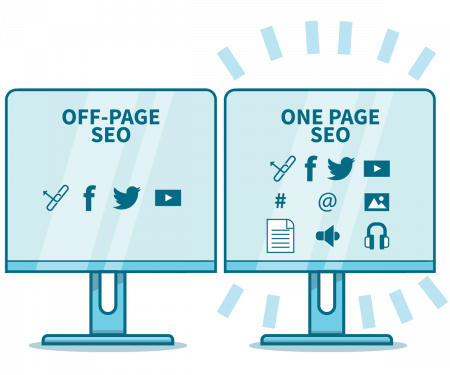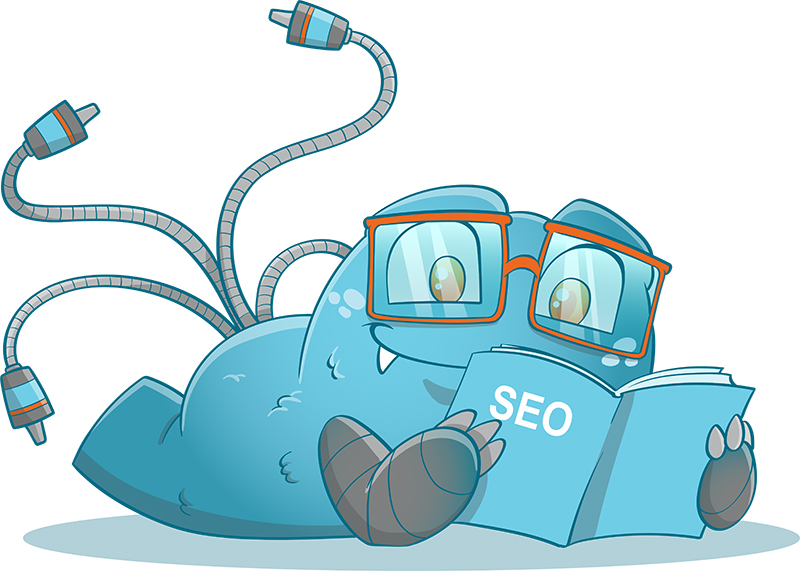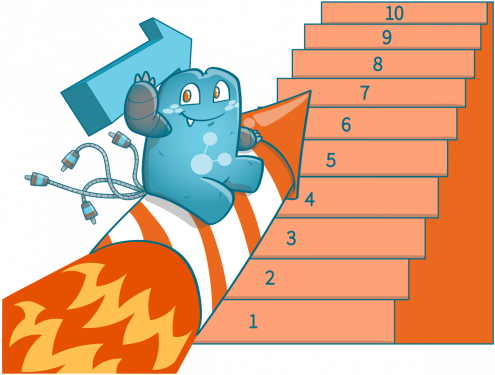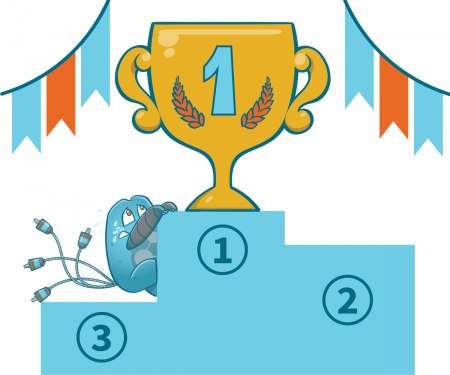A Comprehensive Guide to On Page SEO: What it is and How To Do Better

In today’s digital world, search engine rankings are key for almost every business. However, the process can seem daunting with so many factors affecting your page ranking results – from social media shares and backlinks to user experience (UX) design! In this blog post, we’ll cover all you need to know about on page SEO and the critical factors you need to keep an eye on.
On-page SEO is the process of optimizing your web pages for search engine crawlers. It’s a vital part of any successful digital marketing campaign. These days, on-page SEO is more complicated than ever because so many factors are involved. In this blog post, we’ll go over everything you need to know about on-page SEO and how to do better!

Defining On Page SEO
SEO has two main parts, on-page SEO and off-page SEO. While off-page SEO (backlinks, social media, and other marketing channels) will be the focus of a future blog post, we’re going to talk about on-page SEO today.
On-Page is defined as anything that you or your web development team can directly control. It’s everything from HTML tags like titles and meta descriptions to links within content such as images and video files.
It’s essential for both new and experienced marketers to understand how each factor contributes to better rankings in search engines. You’ll notice that I didn’t say “rank higher” but rather “better rank.” That’s because there are so many different ranking algorithms out there.
At this point, it’s almost impossible to know which one Google is using at any given time.
That said, there are some factors of on-page SEO that will always affect search rankings. For example, creating unique, high-quality content is something you should be doing regardless of what the algorithm actually looks like (although having backlinks certainly doesn’t hurt). Another factor worth mentioning here is length; this isn’t a hard and fast rule, but generally speaking, longer pages tend to rank higher than shorter ones.
On-Page SEO Factors
- High-Quality Content
As mentioned earlier, this is among the factors constantly required by search engines for a website to rank higher on SERPs. Crafting content is easy, but having high-quality ones requires time, effort, and resources.
Most digital marketers follow the E-A-T framework when thinking about what to incorporate into the content. This stands for expertise, authoritativeness, and trustworthiness.
Expertise is for the content creator to have a deep understanding of their topic or niche.
Authoritativeness means that they are seen as an authority in the industry; it can be done by having endorsements from other experts, awards, etc.
Trustworthiness comes with transparency; this makes people feel like they know what’s happening behind the scenes (i.e., customers don’t want to work with brands that try to hide information).
- Have Unique Titles & Meta Descriptions
Both titles and meta descriptions play significant roles for digital marketers because these two elements show up every time you do searches online through Google Search Engine Results Pages (SERPs). So if you want to get as many clicks as possible, it’s a must that you have unique titles and meta descriptions for every single page of your website.
Not only do they need to be different from one another but also on-brand, too. This means using the same language used on social media profiles or within other marketing campaigns.
- Include Keywords Strategically
Keyword research is no longer an exact science because of how search engines work today. There are so many factors at play that make ranking websites hard to predict.
Because of this, a lot of digital marketers opt for “over-optimizing” their content rather than just doing keyword research before publishing them online. It involves going through each line to find out if any keywords can fit effectively.
In most cases, over-optimized content can get penalized. So to prevent this, keywords should be used naturally rather than stuffing them excessively; the purpose of including keywords is to make your content easier for search engines (and readers) to understand.
- Be Strategic with H-Tags
H tags are HTML elements that tell browsers what the structure of a web page looks like; they help improve the user experience because it makes pages easy to navigate and read through. There are six major types: h, div, p, header, article, and aside.
The most important ones here are “header” tags since this tells search engines how much priority you give certain parts on your site, which could also influence ranking signals.
- SEO-Friendly Content
Yes, high-quality content is suitable for your website. However, ensuring that it is SEO-friendly as well will make your chances of ranking higher… higher.
This means that you should use keywords naturally but not excessively, avoid duplicate content (like copying others’ work), and use simple language for your audience to understand.
Google offers its own guide on creating quality content which is worth checking out if you want a one-stop solution when it comes to creating SEO-friendly content.
- Length Matters
Having short web pages isn’t necessarily a bad thing; however, using this as an excuse won’t make search engine ranking easier – instead of having 100 short posts, in the long run, it’s better to have 50 longer ones rather than several, say five hundred?
It may take time before getting there but once you do, rest assured that Google will reward your efforts by pushing them higher up on SERPs.
- User Experience (UX)
User experience is what defines the quality of a guest’s experience when they land on your website. UX includes a lot of different factors such as design, ease of use, and usability. Digital marketers need to optimize their websites not just with SEO but also UX in mind since both are two sides of the same coin when it comes to improving your website.
Having a good user experience (UX) and site speed is another factor that influences ranking signals, too. You can do this by having faster web pages with improved load time, not bogging down visitors with intrusive ads or links, etc.
- It’s All About Links!
- Backlinks
Links may seem like old-school SEO but getting quality ones still matters… unless, of course, if you’re doing something fishy behind the scenes? But most digital marketers consider links as social proof since it’s one way for prospects to know more about your products and services – so it’s best to avoid low-quality links from spammy sources.
On the other hand, link building is still alive, but you need to be strategic. This is because Google changed its algorithm a number of times already.
With that in mind, you should aim for high authority sites as much as possible, even though they’re harder to acquire nowadays since it involves outreach. An easy way out here would be through content syndication, where guest posting can help increase traffic flow while earning quality backlinks at the same time… provided that posts are relevant or valuable enough?
- Internal Links
Lastly, internal links and anchor texts. While these aren’t as important as they were years ago, it’s still worth including them on your website, primarily if relevant ones can support the page’s main topic.
Internal linking is one way to keep visitors on your site longer; this means more opportunities for search engines to crawl through your pages and rank you better (but not too many links since Google doesn’t like that).
By optimizing these eight components, you can achieve better results by ensuring that search crawlers can understand your website content and index it accordingly. Remember: the higher your page ranks in search engine rankings, the more traffic it will receive.
Are All On-Page Factors Important?
There are certain things about your site that can positively or negatively impact your ranking in search engines without directly impacting how well Google crawls your page(s). For example, an image with text overlay is technically a violation of Google’s Webmaster Guidelines, but it doesn’t mean that your page won’t rank well.
Google focuses primarily on the content you’re presenting to users and crawlers, not necessarily how you present it. Anything would be okay as long as there aren’t any direct violations, then what happens next really comes down to user experience (which can vary widely from person to person).
However, this does affect where those rankings are situated within SERPs, so a site with poor SEO copy has a high bounce rate. At the same time, another ranks lower in search results but keeps visitors engaged through their website design optimization efforts. Then they may still outrank you for specific keywords even though overall, your pages perform better than theirs after being crawled by Google.
Internal linking directly affects your SEO, so you need to make sure that you do it right. If you want an internal linking tool that can help you manage your internal links, visit Internal Link Juicer today!
Maximize Ranking Opportunities through On Page SEO
That’s basically what on-page SEO entails: understanding how search engines work to make sure your pages rank better over time using optimization efforts along with good content. It’s not rocket science, but it requires patience and perseverance. Do this enough times for a period of time, and you’ll see that your hard work will pay off better in the long run.
But wait! Since internal linking is part of on-page SEO, you might want a reliable website that can help you quickly build internal links! If you’re interested, you can check out Internal Link Juicer and view their premium offer.






